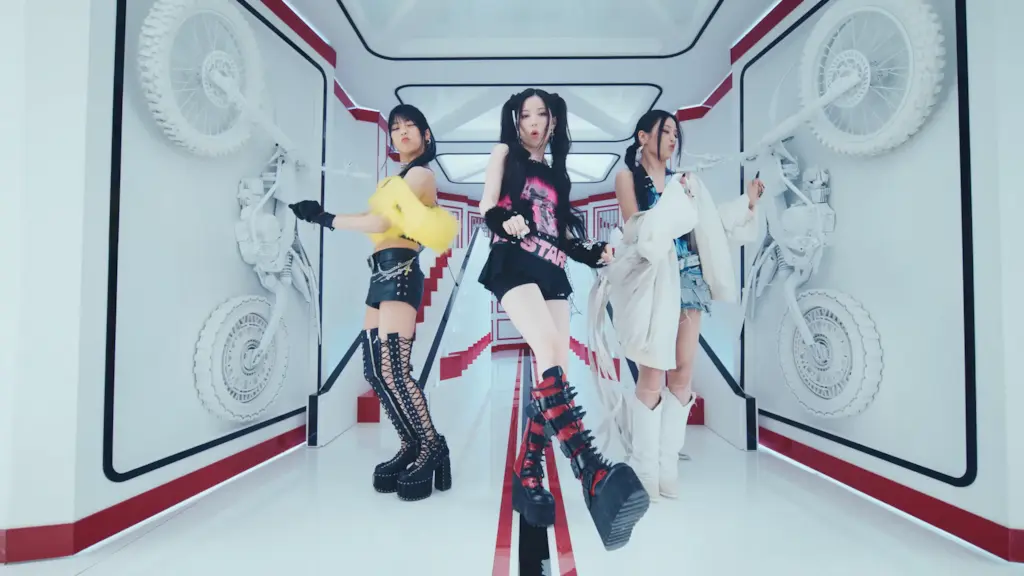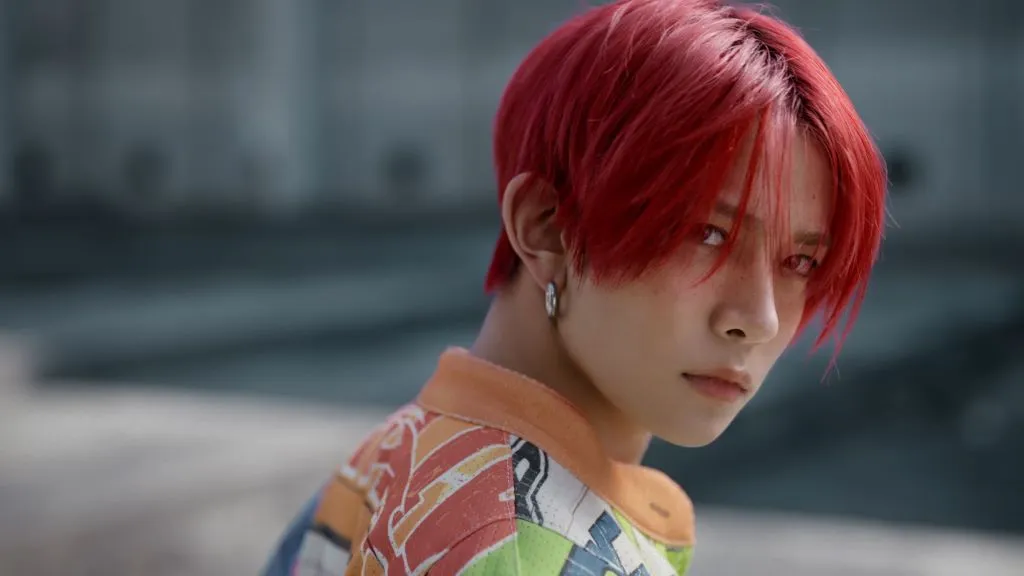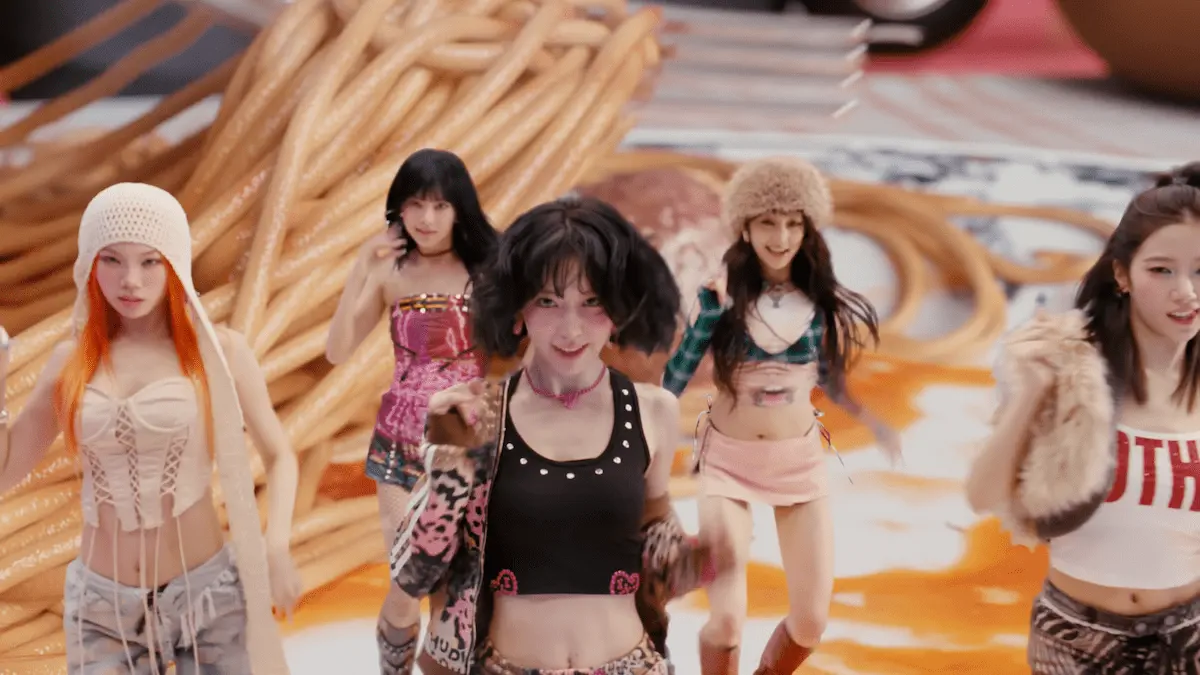BABYMONSTER's 'SHEESH' Explained: When Seven Finally Became One (For Better and Worse)
I’m going to level with you: SHEESH confused me.
Not in a “I don’t understand the concept” way—the castle takeover metaphor is pretty straightforward. But in a “why does this feel simultaneously expensive and unfinished?” way. After it dropped on April 1st, 2024, I watched the discourse explode in real time. 10 million views in hours. 600+ comments overnight on a single forum. And the reactions were aggressively split.
Some people heard YG’s next evolution. Others heard a BLACKPINK photocopy with the serial numbers barely filed off. The song itself—built entirely around that “sheesh!” hook—either grabbed you immediately or made you physically recoil. There was no middle ground.
But here’s what got interesting: I kept coming back to it. Not because I loved it, but because I couldn’t figure out why it bothered me in specific ways. And after DRIP came out six months later and felt noticeably more cohesive, I realized SHEESH’s job was never to be loved. It was to be impossible to ignore.
Let me walk you through what I think actually happened here.

Source: Official BABYMONSTER YouTube (© YG Entertainment)
Quick Navigation
- First Watch: The Polarization
- Credits & Chart Reality
- The Castle Concept: What It's Actually Saying
- The "SHEESH" Problem
- What Actually Worked (And Why Critics Won't Admit It)
- What Didn't Work (And Why Fans Know It)
- The Ahyeon Return: Symbol vs. Reality
- How DRIP Fixed This
- Q&A: Your Questions Answered
- Sources & Credits
First Watch: The Polarization
I hit play expecting chaos—YG’s rookie girl group, seven members finally together, months of buildup. What I got was… a song that sounded exactly like what I expected, which was somehow both reassuring and disappointing.
The castle setting is gorgeous. The members are talented. The choreography is sharp. But something felt off, and I couldn’t pinpoint it immediately. Then I started reading reactions and realized I wasn’t alone.
The Split
The comment sections told two completely different stories:
Camp 1: “This is exactly what I wanted from them. It’s catchy, it’s confident, they delivered.”
Camp 2: “This sounds like BLACKPINK leftovers. Where’s the originality?”
Camp 3 (the uncomfortable middle): “The members are clearly talented, but something’s missing that I can’t identify.”
That third camp? That’s where I landed. And I think that’s actually the most interesting reaction because it meant the problem wasn’t obvious—it was structural.
Credits & Chart Reality
Artist: BABYMONSTER (베이비몬스터)
Song: “SHEESH”
Album: BABYMONS7ER (1st Mini Album)
Release: April 1, 2024
Agency: YG Entertainment
Composers: Choice37, LP, Jang Yoon-ju, others
Lyricists: Choi Hyun-suk, Sandra Wikström, others
The Numbers:
- 10M views in first few hours
- 200M views by May (just over a month)
- #1 on YouTube Music Video Charts for multiple weeks
- Massive engagement, but polarized engagement
Here’s the thing about those numbers: they’re impressive in a vacuum, but the discourse around them was messy. High view counts with equally high criticism. That’s not failure, but it’s not clean success either.
The Castle Concept: What It’s Actually Saying
The MV is set in an abandoned gothic castle, and the metaphor is pretty straightforward: we’re taking over the throne room that’s been waiting for new occupants.
At 0:00-0:30, they’re not sneaking in or earning entry—they’re already inside. That’s a confident narrative choice. They’re not asking permission. They’re claiming what they see as rightfully theirs.
The wide shots at 0:52 show all seven members spread across this massive gothic hall, and it’s visually striking. The architecture towers above them, creating this sense of scale that’s meant to emphasize their arrival as a big deal.
But here’s where my issue started: the set looks expensive but feels empty. Not empty of members—empty of life. Compare this to BLACKPINK’s ‘How You Like That’ church scene, which used dramatic shadows and spotlights to create depth. SHEESH’s castle is evenly lit in a way that makes it feel more like a photo shoot than a lived-in space.
It’s a subtle distinction, but it matters. The metaphor of “taking over the castle” works on paper. Visually, it reads more like “standing in a castle someone rented for the day.”
The “SHEESH” Problem
Let’s address the elephant in the room: that hook.
Building your debut around internet slang is either genius or reckless. For BABYMONSTER, it was… both? The “sheesh” sound is recognizable, works across languages, has built-in meme potential. On paper, perfect.
In execution, it’s divisive in a way I don’t think YG fully anticipated.
Why It Works
When you’re in the right headspace, that bratty, sharp delivery of “sheesh!” is addictive. It’s got personality. It’s unapologetic. It’s the kind of hook that, if it clicks for you, you’ll be chanting it for days.
The repetition isn’t annoying—it’s hypnotic. That’s intentional. The song is designed to loop in your head whether you want it to or not.
Why It Doesn’t
But I saw SO many comments (in Korean, English, Japanese) from people who just… couldn’t get past it. Not because they didn’t understand it, but because the vocal delivery felt grating to them. Too sharp. Too insistent. Too much.
And here’s my take after sitting with it: the hook works better in 15-second clips than in a full 3-minute song. It’s perfect for TikTok. For a music video you’re supposed to replay dozens of times? It tests your patience.
That’s not a fatal flaw, but it’s a design choice that inherently limits your audience. Some people will love the boldness. Others will bounce off it immediately.
What Actually Worked (And Why Critics Won’t Admit It)
Despite my issues with it, there are elements of SHEESH that absolutely delivered. Let me spotlight them because they get lost in the discourse.
1. The Choreography Design
At 1:35 and 2:25, the group formations are genuinely impressive. Sharp, synchronized, geometrically satisfying. The members execute with precision, and you can tell they’ve put in serious hours.
Even people who didn’t like the song admitted the choreography was solid. That’s not nothing. It’s proof that the technical ability is there.
2. Individual Talent on Display
Asa’s flow is clean. Ruka’s presence is commanding. The vocal line’s control is evident, especially in the bridge around 2:15-2:30 where Rora and Rami get a moment that’s notably calmer than the rest of the track.
Multiple reactions I read specifically called out that bridge section as the best part of the song. It’s the one moment where the production pulls back and lets vocal technique shine. That’s telling—when they’re given space, they deliver.
3. The Undeniable Confidence
Love it or hate it, SHEESH is unapologetic. It’s not trying to ease you into BABYMONSTER. It’s not asking if you’re ready. It’s announcing their arrival at full volume and daring you to look away.
That confidence is YG’s entire brand. And for the people who were waiting for a group that embodies that energy, SHEESH delivered exactly what was promised.
What Didn’t Work (And Why Fans Know It)
Now let’s talk about the problems, because they’re real and pretending they don’t exist helps nobody.
1. The BLACKPINK Shadow
This is the big one. SO many reactions mentioned BLACKPINK—either as comparison or criticism. The gothic concept, the girl crush energy, the rap-heavy structure, the “we’re powerful and we know it” attitude… it’s the BLACKPINK formula without meaningful evolution.
One comment I saw put it bluntly: “If BLACKPINK recorded this with a different MV, the song would’ve been more loved.” That’s harsh but not unfair. The song sounds like it was written with BLACKPINK in mind and then reassigned.
For a debut trying to establish a new identity, that’s a problem. You can be inspired by your label seniors without sounding like you’re auditioning to replace them.
2. The MV’s Visual Identity Crisis
Here’s the thing that bugged me most: the MV looks expensive but directionless.
The castle is a beautiful set. The lighting is… functional. The editing is… fine. There’s no distinct visual language. Nothing that makes you go “oh, that’s a BABYMONSTER MV.” It’s competent but not memorable.
Compare this to how aespa or NMIXX have immediately identifiable visual styles. You can tell their MVs apart from a single frame. SHEESH could be any high-budget K-pop video from the past five years.
3. The Vocal Distinctiveness Issue
This is subtle but crucial: I had trouble distinguishing the members’ voices on first listen. Not because they’re bad singers—they’re clearly skilled. But because the mixing blends them in a way that doesn’t highlight individual color.
When seven members share a 3-minute song, you need vocal personalities that pop instantly. SHEESH doesn’t quite achieve that. By the end of one listen, I couldn’t tell you who sang what beyond the rap parts.
That’s a mixing/arrangement problem, not a talent problem. But it’s still a problem.
4. The “Just YG” Fatigue
Multiple reactions expressed some version of “this is the same YG sound from 10 years ago.” And… yeah. The formula is intact: aggressive beats, confident lyrics, girl crush concept, rap-heavy verses into explosive chorus.
That formula worked for BIGBANG, 2NE1, BLACKPINK because each felt like evolution. SHEESH feels like repetition. The excitement comes from “YG is doing their thing again” not “YG is doing something new.”
The Ahyeon Return: Symbol vs. Reality
SHEESH marked Ahyeon’s return after her hiatus, making it the first official release with all seven members. For fans who’d been waiting, this was huge—the group was finally complete.
But here’s the interesting tension: the return carried enormous symbolic weight for the fandom, while being nearly invisible to casual viewers. The narrative of “seven monsters united” mattered deeply to invested fans but didn’t translate into the MV itself.
I saw comments from people saying they couldn’t even spot Ahyeon clearly in certain scenes. That’s a screen time distribution problem that’s probably unsolvable with seven members in a 3-minute video, but it creates a gap between the story fans are invested in and the story the MV actually tells.
The “finally seven” narrative works emotionally if you’ve followed their journey. If you’re encountering them for the first time? You just see seven talented performers, with no indication that this is supposed to be a momentous reunion.
How DRIP Fixed This
Six months later, BABYMONSTER released DRIP, and the reception was noticeably warmer. Why?
1. It Felt More Refined
The production on DRIP is cleaner. The mixing gives members more individual space. The hook is still confident but less abrasive. It’s like they took SHEESH’s energy and smoothed out the rough edges.
2. The MV Had Clearer Direction
DRIP’s visual concept is more cohesive. There’s a distinct style that feels intentional rather than just expensive. It’s not revolutionary, but it’s consistent.
3. They Showed Growth
DRIP doesn’t sound like SHEESH 2.0. It sounds like the same group six months more mature. That progression matters. It showed they weren’t locked into one sound.
In retrospect, SHEESH’s job was to be loud and polarizing—to force people to have an opinion about BABYMONSTER. DRIP’s job was to prove they could do more than that. Both succeeded at their respective goals.
🎭 Rewatch Challenge: The Empty Throne
Throughout the MV, the members move through the castle but never actually *sit* on any throne or claim any specific seat of power. They occupy the space but don't settle into it.
Your mission: Is this intentional symbolism (they're still rising, not arrived yet)? Or is it a missed opportunity (they should've had a throne moment)? What's your read?
Also: count how many actual thrones or crown symbols appear in the set design. I counted 4 distinct ones, but I might've missed some.
Q&A: Your Questions Answered
Why was the reaction so split?
Multiple factors. The "sheesh" hook is polarizing by design—you either vibe with it or find it grating. The YG formula felt too familiar to some listeners (BLACKPINK comparisons were inevitable). The MV looked expensive but lacked a distinct visual identity. Plus, timing matters—this sound might've hit differently 5 years ago. It's a love-it-or-hate-it song by nature, not accident. That's both its strength (impossible to ignore) and its weakness (alienates a chunk of potential fans immediately).
What does the castle symbolize?
It's the K-pop throne room—old, established, waiting for new rulers. By setting the MV there, they're making a statement: we're not asking for permission to be here. We're taking our place. The gothic aesthetic also connects to their "monster" branding—beautiful but dangerous, elegant but powerful. However, the execution felt more like occupying a space than truly claiming it, which created some disconnect between concept and delivery.
Is this better or worse than BATTER UP?
Depends on what you value. BATTER UP was safer, more universally accessible, but also less distinctive. SHEESH is bolder, more polarizing, more memorable—but also more divisive. Neither is objectively "better." They serve different purposes. BATTER UP introduced them gently. SHEESH announced them loudly. Interestingly, many reactions mentioned preferring BATTER UP, which suggests SHEESH's aggressive approach didn't land as intended for a significant portion of the audience.
How important was Ahyeon's return?
Symbolically huge for fans, but practically complex. Her return meant the group was finally "complete," which carried emotional weight for people who'd followed their journey. However, it also meant distributing screen time across seven members in three minutes, which led to some members feeling underutilized. The "finally seven" narrative works if you're invested in their story. For casual viewers encountering them fresh, it's invisible context. The gap between symbolic importance and visual execution created unmet expectations for some fans.
Did the mixed reception hurt them?
Not measurably. The song hit 200M views in just over a month and dominated YouTube charts despite the discourse. In the attention economy, strong reactions—even negative ones—beat indifference. The passionate defenders became more vocal precisely because there were critics to argue with. By the time DRIP dropped, everyone knew who BABYMONSTER was. That was the real goal. SHEESH's job wasn't to be universally loved—it was to be impossible to ignore. Mission accomplished, even if it came with baggage.
What did DRIP do differently?
DRIP felt more refined without losing edge. The production was cleaner, giving members more individual vocal space. The hook was still confident but less abrasive. The MV had clearer visual direction. Most importantly, it showed growth—not SHEESH 2.0, but evolution. Where SHEESH said "we've arrived," DRIP said "and here's what we can do now that you're paying attention." The warmer reception to DRIP validated that SHEESH's polarizing approach, while strategic, needed to be a starting point, not a permanent identity.
Sources & Credits
Primary Sources:
- BABYMONSTER “SHEESH” Official MV - YouTube
- Korean netizen reactions - allkpop
- Wikipedia: SHEESH (Babymonster song)
- TheQoo forum discussions (March 2024)
Chart Performance:
- 10M views in first few hours
- 200M views by May 4, 2024
- #1 YouTube Music Video Charts (multiple weeks)
- 600+ netizen forum comments overnight
- Mixed critical reception, strong commercial performance
Production Credits:
- Composers: Choice37, LP, Jang Yoon-ju, others
- Lyricists: Choi Hyun-suk, Sandra Wikström, others
- Label: YG Entertainment
- Album: BABYMONS7ER (1st Mini Album)
Cultural Context:
- Official debut with all 7 members (Ahyeon’s return)
- YG’s first girl group debut since BLACKPINK (2016)
- Released during competitive period (multiple major comebacks)
- Followed by DRIP (November 2024) with warmer reception




Comments